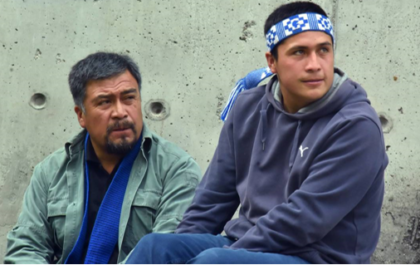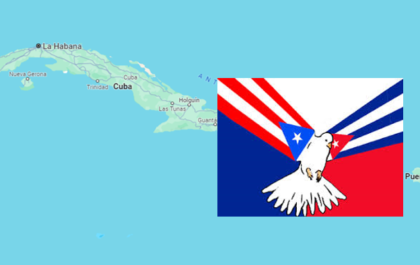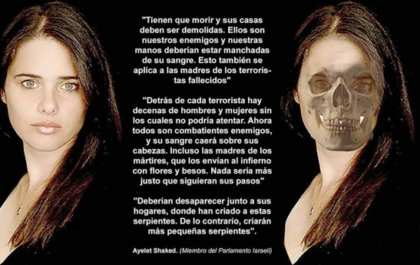En EE.UU se patentó el 26.11.2007 una variedad de virus de Ebola conocida como hEbola o EboBun
por Medios
10 años atrás 7 min lectura
El resumen de la patente dice:
«Esta invención» produce los virus humanos Ebola (hEbola) de forma aislada en su versión denominada Bundibugyo (EboBun) en depósito en los Centros para el Control y Prevención («CDC»; Atlanta, Georgia, Estados Unidos de Norteamerica). Noviembre 26, 2007. Se le da el número de orden 200706291
Y sigue así «La presente invención se basa en la aislación e identificación de una nueva especie de virus de Ebola humano, EvoBun. EboBun fue aislado de un paciente sufriendo de fiebre hemorrágica en un brote reciente en Uganda»
Incluye también la preparación de la vacuna y los medios de contagio para poder cosechar los viriones ; incluye cualquier virus de Ebola que comparta a lo menos un 70% de la secuencia genética con el EboBun. Esto fue aprobado el 2010.
El problema es que el Ebola se escapó realmente en Africa y se espera una pandemia de verdad para la cual no sabemos si existe alguna vacuna. Y cabe la gran duda si fue USA el que desató la pandemia para poder usar la vacuna o por lo menos tiene los métodos para prepararla.
La otra posibilidad es que usen la vacuna solamente en los países elegidos para sobrevivir…
Vea usted mismo el texto completo del artículo, indicando detalles y fuentes:
Why does the CDC own a patent on Ebola ‘invention?’
Sunday, August 03, 2014
by Mike Adams, the Health Ranger
Tags: Ebola patent, vaccines, profit motive
NaturalNews) The U.S. Centers for Disease Control owns a patent on a particular strain of Ebola known as «EboBun.» It’s patent No. CA2741523A1 and it was awarded in 2010. You can view it here. (Thanks to Natural News readers who found this and brought it to our attention.)
Patent applicants are clearly described on the patent as including:
The Government Of The United States Of America As Represented By The Secretary, Department Of Health & Human Services, Center For Disease Control.
The patent summary says, «The invention provides the isolated human Ebola (hEbola) viruses denoted as Bundibugyo (EboBun) deposited with the Centers for Disease Control and Prevention («CDC»; Atlanta, Georgia, United States of America) on November 26, 2007 and accorded an accession number 200706291.»
It goes on to state, «The present invention is based upon the isolation and identification of a new human Ebola virus species, EboBun. EboBun was isolated from the patients suffering from hemorrhagic fever in a recent outbreak in Uganda.»
It’s worth noting, by the way, that EboBun is not the same variant currently believed to be circulating in West Africa. Clearly, the CDC needs to expand its patent portfolio to include more strains, and that may very well be why American Ebola victims have been brought to the United States in the first place. Read more below and decide for yourself…
Harvesting Ebola from victims to file patents
From the patent description on the EboBun virus, we know that the U.S. government:
1) Extracts Ebola viruses from patients.
2) Claims to have «invented» that virus.
3) Files for monopoly patent protection on the virus.
To understand why this is happening, you have to first understand what a patent really is and why it exists. A patent is a government-enforced monopoly that is exclusively granted to persons or organizations. It allows that person or organization to exclusively profit from the «invention» or deny others the ability to exploit the invention for their own profit.
It brings up the obvious question here: Why would the U.S. government claim to have «invented» Ebola and then claim an exclusively monopoly over its ownership?
U.S. Government claims exclusive ownership over its «invention» of Ebola
The «SUMMARY OF THE INVENTION» section of the patent document also clearly claims that the U.S. government is claiming «ownership» over all Ebola viruses that share as little as 70% similarity with the Ebola it «invented»:
…invention relates to the isolated EboBun virus that morphologically and phylogenetically relates to known members filoviridae… In another aspect, the invention provides an isolated hEbola EboBun virus comprising a nucleic acid molecule comprising a nucleotide sequence selected from the group consisting of: a) a nucleotide sequence set forth in SEQ ID NO: 1; b) a nucleotide sequence that hybridizes to the sequence set forth in SEQ ID NO: 1 under stringent conditions; and c) a nucleotide sequence that has at least 70%, 75%, 80%, 85%, 90%, 95%, 96%, 97%, 98%, or 99% identity to the SEQ ID NO:
1. In another aspect, the invention provides the complete genomic sequence of the hEbola virus EboBun.
Ebola vaccines and propagation
The CDC patent goes on to explain it specifically claims patent protection on a method for propagating the Ebola virus in host cells as well as treating infected hosts with vaccines:
In another aspect, the invention provides a method for propagating the hEbola virus in host cells comprising infecting the host cells with the inventive isolated hEbola virus described above, culturing the host cells to allow the virus to multiply, and harvesting the resulting virions.
In another aspect, the invention provides vaccine preparations, comprising the inventive hEbola virus, including recombinant and chimeric forms of the virus, nucleic acid molecules comprised by the virus, or protein subunits of the virus. The invention also provides a vaccine formulation comprising a therapeutically or prophylactically effective amount of the inventive hEbola virus described above, and a pharmaceutically acceptable carrier.
No medical reason to bring Ebola to the United States
This patent may help explain why Ebola victims are being transported to the United States and put under the medical authority of the CDC. These patients are carrying valuable intellectual property assets in the form of Ebola variants, and the Centers for Disease Control clearly desires to expand its patent portfolio by harvesting, studying and potentially patenting new strains or variants.
Dr. Bob Arnot, an infectious disease specialist who spent time on the ground in developing nations saving lives, recently told Judge Jeanine, «There is no medical reason to bring them here, especially when you see how well Dr. Bradley was.» (2)
There is, however, an entirely different reason to bring Ebola patients to America: so they can be exploited for medical experiments, military bioweapons harvesting or intellectual property claims.
Surely, medical authorities at Emory University and the CDC are working hard to save the lives of the two patients who have been transported to the U.S. But they are also pursuing something else at the same time: an agenda of isolating, identifying and patenting infectious disease agents for reasons that we can only imagine.
Only hoping to save lives?
On one hand, it’s worth pointing out that the CDC’s patent on Ebola is at least partially focused on methods for screening for Ebola and treating Ebola victims with drugs or vaccines. This seems like a worthwhile precaution against an infectious disease that clearly threatens lives.
On the other hand, why the patent? Patenting Ebola seems as odd as trying to patent cancer or diabetes. Why would a government organization claim to have «invented» this infectious disease and then claim a monopoly over its exploitation for commercial use?
Does the CDC hope to collect a royalty on Ebola vaccines? Is it looking to «invent» more variants and patent those too?
Make no mistake that billions of dollars in profits are at stake in all this. Shares of Tekmira surged over 11% last Friday as pressure was placed on the FDA to fast-track Ebola vaccine trials the company has set up. «Health campaigners have started a petition which has already been signed by approximately 15,500 people on change.org pressurizing FDA to approve the drug in the minimum possible time frame,» reports BidnessEtc.com. (3)
Carefully scripted medical theater
With this, we start to see the structure of the elaborate medical theater coming together: A global pandemic panic, a government patent, the importation of Ebola into a major U.S. city, an experimental vaccine, the rise of a little-known pharmaceutical company and a public outcry for the FDA to fast-track the vaccine.
If Act II stays on course, this medical theater might someday involve a «laboratory accident» in a U.S. lab, the «escape» of Ebola into the population, and a mandatory nationwide Ebola vaccination campaign that enriches Tekmira and its investors while positioning the CDC with its virus patents as the «savior of the American people.»
Yes, we’ve heard this music before, but the last time around it was called Swine Flu.
The formula is always the same: create alarm, bring a vaccine to market, then scare governments into buying billions of dollars worth of vaccines they don’t need.
Watch the episode with Judge Jeanine here:
*Fuente: Natural News
Learn more: http://www.naturalnews.com/046290_Ebola_patent_vaccines_profit_motive.html#ixzz3DXWn4WN7
Sources for this article include:
(1) http://www.google.com/patents/CA2741523A1?cl…
(2) https://www.youtube.com/watch?v=SHAK6oX-JN4&feature=…
Artículos Relacionados
Chile: Los territorios se movilizan hacia la III Marcha Nacional por el Agua
por Movimiento Social por la Recuperación del Agua y la Vida (Chile)
9 años atrás 9 min lectura
Leucemia Linfoblástica Aguda: Revolucionario, células «reprogramadas» contra un tumor
por Graciela Vizcay Gomez (Argentina)
6 años atrás 6 min lectura
Junto a Consejos de Salud del Biobío, inician estrategia contra el Eunacom
por Prensa Oficina Parlamentaria Senador Navarro
8 años atrás 4 min lectura
Iglesia y sexualidad: los graves efectos del celibato y la abstinencia
por Claudio Ibáñez S. (Chile)
6 años atrás 17 min lectura
Covid-19: ¿realmente cuántas muertes y contagios está causando?
por Ahí les va
4 años atrás 1 min lectura
Amnistía Internacional:Las autoridades chilenas deben proteger a Rodrigo Mundaca y a otras personas que defienden el medioambiente
por Amnistía Internacional
6 años atrás 3 min lectura
Ernesto Llaitul es absuelto por el Tribunal Oral en lo Penal de Los Ángeles
por Radio Universidad de Chile
3 días atrás
El Tribunal de Juicio Oral en lo Penal de Los Ángeles absolvió este martes a Ernesto Llaitul, hijo del líder de la Coordinadora Arauco-Malleco, Héctor Llaitul, por un ataque incendiario ocurrido en septiembre de 2021 la Región del Bío Bío.
Puerto Rico y Cuba – Dos alas de un mismo pájaro
por Comité de Apoyo a Julian Assange (Estocolmo, Suecia)
3 días atrás
23 de julio de 2024 El Comité de Apoyo a Julian Assange en Estocolmo, Suecia, rindió un emotivo homenaje a este héroe del periodismo libre (sin mordazas) en el…
Ernesto Llaitul es absuelto por el Tribunal Oral en lo Penal de Los Ángeles
por Radio Universidad de Chile
3 días atrás
El Tribunal de Juicio Oral en lo Penal de Los Ángeles absolvió este martes a Ernesto Llaitul, hijo del líder de la Coordinadora Arauco-Malleco, Héctor Llaitul, por un ataque incendiario ocurrido en septiembre de 2021 la Región del Bío Bío.
Un Informe vergonzoso e inaceptable: el de Human Rights Watch
por Pablo Jofré Leal (Chile)
4 días atrás
La teoría del empate propugnada por la organización internacional Human Rights Watch (HRW) al tratar de igualar el proceso de genocidio que lleva a cabo el régimen nacionalsionista israelí, respecto a las legítimas acciones de autodefensa y lucha por la autodeterminación de Palestina, son inaceptables.



